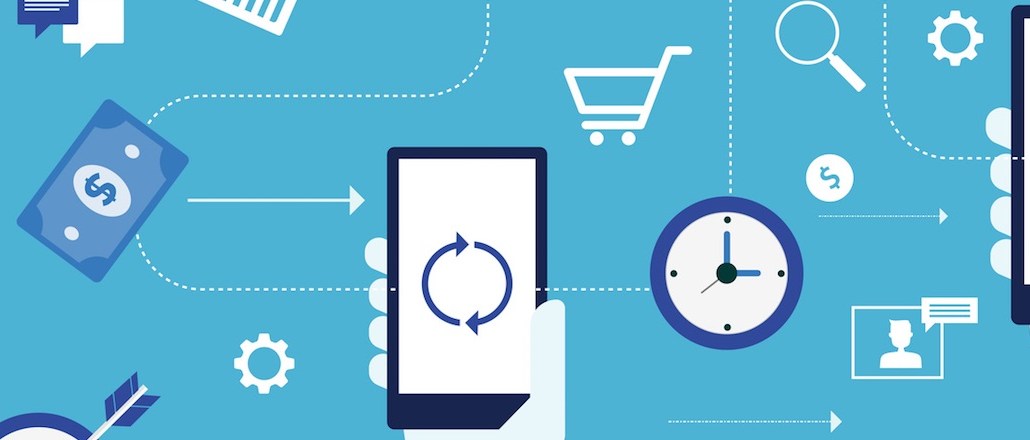How financial tech startups are reaching out to low-income Americans

The term “financial technology” may evoke images of wealthy sophisticates using their phones to do their banking and manage investments. Recent data shows that adoption rates skew toward younger urbanites. But financial technology companies like WiseBanyan are looking to new ways to reach lower-income customers, including those who don’t even have a bank account or use payday loan services instead of traditional accounts.
The market is big: According to a Federal Deposit Insurance Corporation study, in 2015, 7 percent of the U.S. households were “unbanked,” meaning no members had a bank account. Unsurprisingly, unbanked rates were higher among low-income customers, and outreach to this segment of the market has been a challenge for the financial services industry as a whole. Among the reasons cited for not having a bank account were insufficient funds and high fees.
The Pew Research Center defines lower-income households as those whose incomes are less than 67 percent of the American median household income, roughly $36,000. This segment of the population, according to Pew, is about a third of the U.S. population. Industry watchers say the traditional banking system isn’t designed for lower-income customers, creating space for financial technology companies to fill the gap.
“Financial technology offers the potential to better serve consumers on a host of issues where current products offered by banks either don’t meet the needs or the products offered by banks are at very high cost,” said Aaron Klein, economics fellow at the Brookings Institution.
Financial technology companies reach lower-income customers through easier access to money, credit and lower-cost services, he said.
One area where lower-income customers haven’t traditionally been considered is investment planning, often called “wealth management.”
WiseBanyan, a robo-adviser app, offers automated investment advice after analyzing its customers’ financial goals. Unlike traditional brokerages, it allows customers to deposit and withdraw without fees, regardless of income category. CEO Herbert Moore said the app’s goal is to reduce barriers to entry to allow individuals of any income category to achieve their financial goals.
“As a firm, we believe that people of any income or asset level should be able to achieve their financial goals,” he said. “We can help folks who would otherwise not be offered a service.”
Moore said a quarter of his 23,000 customers have incomes under $50,000. The app’s revenue stream comes from value-added services, including a fee-based tool that helps users look for tax deductions. These types of money-management tools could potentially benefit a large swathe of the American population.
Legacy banks, however, note that low-income customers can take advantage of specially tailored products to meet their needs. These include including low-fee accounts, like the Citi Access Account, and prepaid visa cards that offer many of the features of checking, like Chase Liquid or PNC SmartAccess prepaid visa card. Citi Access Account customers pay a $10 monthly fee that can be waived if they meet certain conditions, while Chase Liquid and PNC SmartAccess cards both cost around $5 a month.
“Our goal is to get people who are out of the mainstream — often for reasons that aren’t their own fault — to give them the tools they need to get back in the mainstream and hopefully become PNC customers,” said a PNC Bank spokesman.
Still, industry watchers say that financial technology companies have an opportunity to fill a void by offering banking and financial services to lower-income customers, said Courtney Robinson, policy counsel at the Center for Responsible Lending, a non-profit whose mission is to ensure a fair, inclusive financial marketplace for borrowers. “There is a gap that’s being filled for lower-income borrowers, borrowers of color.”
Despite the advantages that financial technology companies offer, Robinson stresses that the lending space among startups still skews toward higher-income borrowers, and customers still need to be vigilant against high fees and lending rates.
“While some are masquerading as something different or unique, they’re offering almost payday loan-like prices,” she said.
For legacy banks, partnering with financial technology entrepreneurs may be the best way forward to enhance access. Through a $30 million contribution to a five-year partnership with the Center for Financial Services Innovation, for example, Chase aims to support financial technology innovation through funding, mentorship and support for early-stage entrepreneurs.
“It’s going to be us working together that’s ultimately going to reach low-income consumers,” said Colleen Briggs, executive director of community innovation at JPMorgan Chase. “That’s how we’ll move the needle.”
More in Marketing

Why the New York Times is forging connections with gamers as it diversifies its audience
The New York Times is not becoming a gaming company. But as it continues to diversify its editorial offerings for the digital era, the Times has embraced puzzle gamers as one of its core captive audiences, and it is taking ample advantage of its advantageous positioning in the space in 2024.

Why B2B marketers are advertising more like consumer brands to break through a crowded marketplace
Today’s marketing landscape is more fragmented than ever. Like consumer brands, business brands are looking to stand out in a crowded and competitive marketplace, making marketing tactics like streaming ads, influencers and humorous spots more appealing.

As draft puts WNBA in spotlight, the NBA is speeding up ballplayers’ transition to creators
The NBA’s star athletes are its greatest marketing asset.





